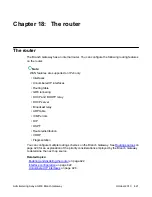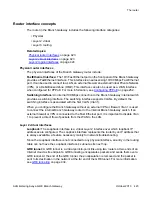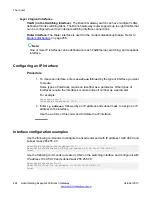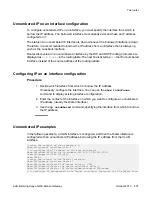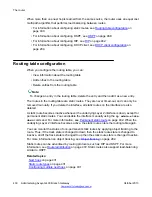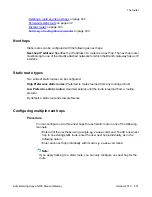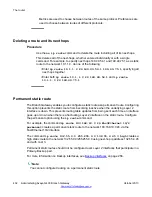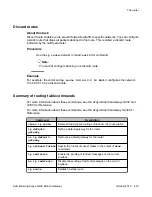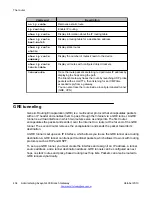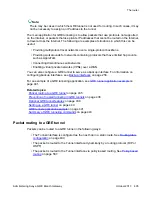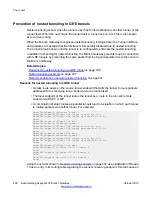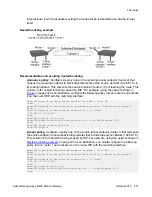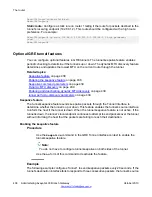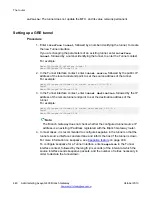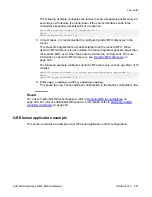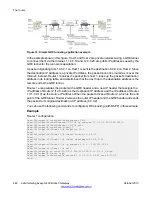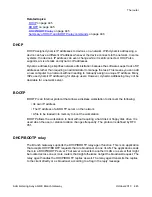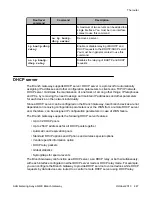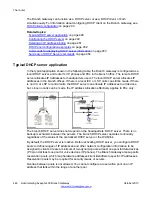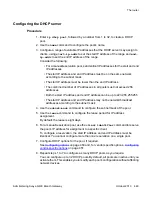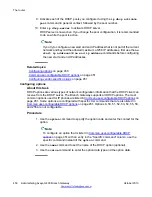
Note:
There may be cases in which the GRE tunnel is not used for routing. In such cases, it may
not be necessary to assign an IP address to the tunnel.
The main application for GRE tunneling is to allow packets that use protocols not supported
on the Internet, or packets that use private IP addresses that cannot be routed on the Internet,
to travel across the Internet. The following are examples of situations in which this can be
useful:
• Providing multiprotocol local networks over a single-protocol backbone
• Providing workarounds for networks containing protocols that have limited hop counts,
such as AppleTalk
• Connecting discontinuous subnetworks
• Enabling virtual private networks (VPNs) over a WAN
You can also configure a GRE tunnel to serve as a backup interface. For information on
configuring backup interfaces, see
on page 256.
For an example of a GRE tunneling application, see
GRE tunnel application example
on
page 441.
Related topics:
Packet routing to a GRE tunnel
on page 435
Prevention of nested tunneling in GRE tunnels
on page 436
on page 438
GRE tunnel application example
Summary of GRE tunneling commands
on page 443
Packet routing to a GRE tunnel
Packets can be routed to a GRE tunnel in the following ways:
• The Tunnel interface is configured as the next hop in a static route. See
• The packet is routed to the Tunnel interface dynamically by a routing protocol (RIP or
OSPF)
• The packet is routed to the Tunnel interface via policy-based routing. See
on page 587.
The router
Administering Avaya G430 Branch Gateway
October 2013 435
Summary of Contents for G430
Page 1: ...Administering Avaya G430 Branch Gateway Release 6 3 03 603228 Issue 5 October 2013 ...
Page 12: ...12 Administering Avaya G430 Branch Gateway October 2013 ...
Page 246: ...VoIP QoS 246 Administering Avaya G430 Branch Gateway October 2013 Comments infodev avaya com ...
Page 556: ...IPSec VPN 556 Administering Avaya G430 Branch Gateway October 2013 Comments infodev avaya com ...

